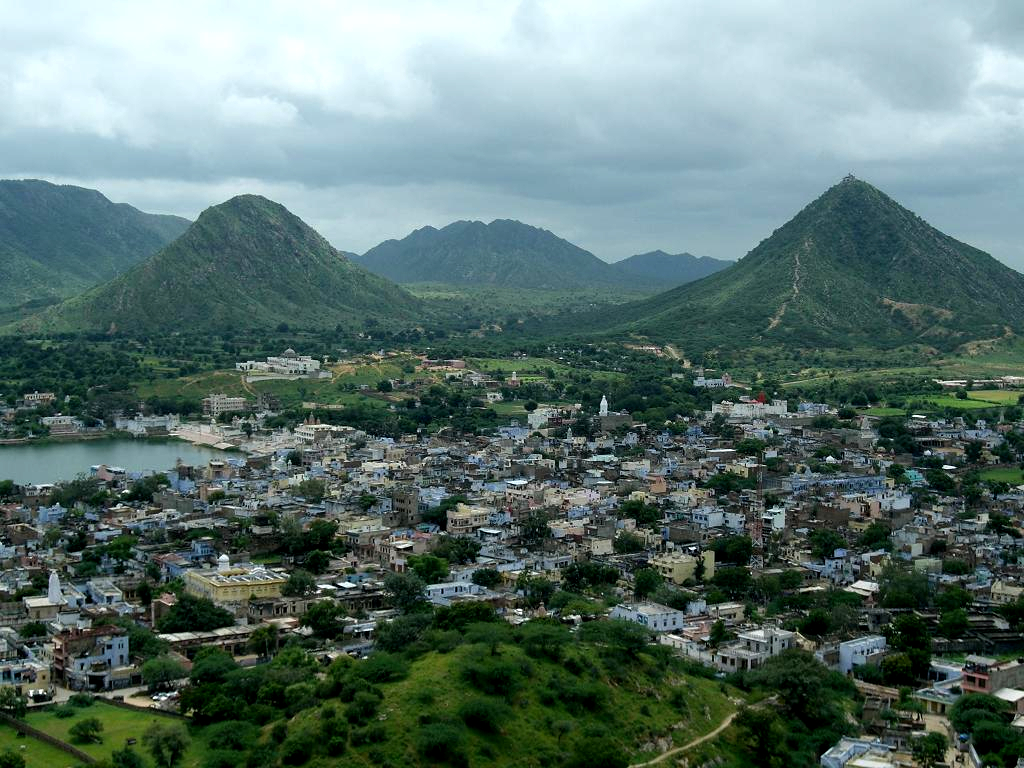|
Vagri
The Vagri (Vaghri, Waghri or Baghri) (Gujarati: , ) are a tribe and caste found in the states of Rajasthan and Gujarat in India the province of Sindh in Pakistan.People of India Rajasthan Volume XXXVIII Part Two edited by B.K Lavania, D. K Samanta, S K Mandal & N.N Vyas pp. 975 to 979 Popular Prakashan History During the British Raj, the Vagri were listed under the Criminal Tribes Act of 1871 as a tribe "addicted to the systematic commission of non-bailable offences." In 1952, they were " denotified", meaning that they were no longer listed as criminals. Present circumstances In India In India, the Vagri are mainly located in the Gujarat District. Like many other Gujarati Hindu communities, they are endogamous but maintain gotra exogamy. Their main clans are the Badgujar, Vaghela, Solanki, Charan and Godara. They are a landless community, although a few do hold small plots of land. The Vagri are also cattle breeders and cattle traders and sell their cattle at the famous P ... [...More Info...] [...Related Items...] OR: [Wikipedia] [Google] [Baidu] |
Gujarat District
Gujarat (, ) is a state along the western coast of India. Its coastline of about is the longest in the country, most of which lies on the Kathiawar peninsula. Gujarat is the fifth-largest Indian state by area, covering some ; and the ninth-most populous state, with a population of 60.4 million. It is bordered by Rajasthan to the northeast, Dadra and Nagar Haveli and Daman and Diu to the south, Maharashtra to the southeast, Madhya Pradesh to the east, and the Arabian Sea and the Pakistani province of Sindh to the west. Gujarat's capital city is Gandhinagar, while its largest city is Ahmedabad. The Gujaratis are indigenous to the state and their language, Gujarati, is the state's official language. The state encompasses 23 sites of the ancient Indus Valley civilisation (more than any other state). The most important sites are Lothal (the world's first dry dock), Dholavira (the fifth largest site), and Gola Dhoro (where 5 uncommon seals were found). Lothal is believed ... [...More Info...] [...Related Items...] OR: [Wikipedia] [Google] [Baidu] |
Khodiyar
Khodiyar is a Hindu folk goddess worshiped in Gujarat and Rajasthan states in India. The suffix ''Mata'' or ''Maa'' (meaning "mother") is generally added to her name, similar to other Hindu goddesses. Legends The legend of Khodiyar is dated around 700 AD. A man called Mamaniya Gadhvi lived in the Roishala village in Vallabhipur in modern Bhavnagar district. Due to his honesty and devotion to Shiva, he had an exceptional friendship with the local Maitraka king Shilbhadra. The ruler's ministers envied Gadhvi's relationship with Shilbhadra and planned to get rid of him. While they failed to persuade the king, they managed to persuade his queen to distrust Gadhvi by explaining that a childless married man is inauspicious. Soon, the doorkeepers denied Gadhvi entrance into the palace. When Gadhvi asked for the reason, he was told that a childless man is not worthy of the king's presence. Humiliated, Mamaniya went home before visiting the temple. He prayed to Shiva for progeny. He d ... [...More Info...] [...Related Items...] OR: [Wikipedia] [Google] [Baidu] |
Meldi Mata
Meldi Mata is a Hindu goddess and household deity who protects farmland. A legend says that she can grant any wish. She is mainly famous in the western state of Gujarat. She is a revered goddess for low-caste Hindus and people of Chunvalia Koli. Her vahana ''Vahana'' ( sa, वाहन, or animal vehicle, literally "that which carries, that which pulls") denotes the being, typically an animal or mythical, a particular Hindus, Hindu God is said to use as a vehicle. In this capacity, the vahana ... is a goat. She has eight hands which hold a variety of weapons. References Mother goddesses Hindu goddesses [...More Info...] [...Related Items...] OR: [Wikipedia] [Google] [Baidu] |
Bahuchara Mata
The Bahuchara Mata ( hi, बहुचर माता, Bahucharā Mātā; gu, બહુચર માતા, Bahuchara Mātā) is a Hindu goddess of chastity and fertility in her Maiden aspect, of the incarnation of the Hinglaj. Like other divinities in Gujarat and Rajasthan, Bahuchara is of Charan origin. Devi Bahuchara was the daughter of Bapaldanji Detha. She is also considered the patroness of the hijra community. Her primary temple is located in Becharaji town in Mehsana district of Gujarat, India. Bahuchara was worshipped by a Koli dacoit Bapaiya and her shrine was established by him under a Varakhada tree after her death in Shankhalpur. Depiction and symbols Bahuchara was born in the Charan (Gadhvi) society. Devi Bahuchara was the daughter of Bapaldaan Detha. Bahuchara Mata is shown as a woman who carries a sword on her bottom left, a text of scriptures on her top left, the ''abhay hasta mudra'' ("showering of blessings") on her bottom right, and a trident on her top rig ... [...More Info...] [...Related Items...] OR: [Wikipedia] [Google] [Baidu] |
Quasi-judicial Body
A quasi-judicial body is non-judicial body which can interpret law. It is an entity such as an arbitration panel or tribunal board, that can be a public administrative agency but also a contract- or private law entity, which has been given powers and procedures resembling those of a court of law or judge, and which is obliged to objectively determine facts and draw conclusions from them so as to provide the basis of an official action. Such actions are able to remedy a situation or impose legal penalties, and they may affect the legal rights, duties or privileges of specific parties.''West's Encyclopedia of American Law'', edition 2. Copyright 2008 The Gale Group, Inc. Powers Such bodies usually have powers of adjudication in such matters as: * breach of discipline * conduct rules * trust in the matters of money or otherwise Their powers are usually limited to a very specific area of expertise and authority, such as land use and zoning, financial markets, employme ... [...More Info...] [...Related Items...] OR: [Wikipedia] [Google] [Baidu] |
Pushkar
Pushkar is a city and headquarters of Pushkar tehsil in the Ajmer district in the Indian state of Rajasthan. It is situated about northwest of Ajmer and about southwest of Jaipur.Pushkar Encyclopaedia Britannica It is a pilgrimage site for s and s. Pushkar has many temples. Most of the temples and ghats in Pushkar are from the 18th century and later, because many temples were destroyed during Muslim conquests in the area. Subsequently, the destroyed temples were rebuilt. The most famous among Pushkar temples is the red spired [...More Info...] [...Related Items...] OR: [Wikipedia] [Google] [Baidu] |
Godara
Sunita Godara is a former Indian marathon runner from Nausana. She became the national marathon champion first time in 1984 by winning Delhi Marathon She won medals in Malaysia, Thailand, India, Singapore, Philippines, Indonesia, Holland, Egypt, Japan & top 10 in many European countries & Cities- Paris, Australia, Italy, Istanbul, Turkey, the Penang 4 times and Kedah marathons. She won gold at 1992 Asian Marathon Championship held at Bandung. She competed in 1985 Boston Marathon & 1990-1991 London Marathon. She finished her College from Banasthali Vidyapith. Sunita Godara holds the record of running the maximum marathons run by an Indian. She has run in 76 full marathons, starting with the Rath Marathon in 1984. She finished first 25 times, second 12 times, and third 14 times. In addition to that, she won 123 half marathons and has run 200 international races on all continents. In 1990 she clocked 2 hours 49.21 minutes to become the first Indian to win a world-class race. ... [...More Info...] [...Related Items...] OR: [Wikipedia] [Google] [Baidu] |
Solanki (clan)
Solanki also known as Chaulukya is a clan name originally associated with the Rajputs in Northern India but which has also been borrowed by other communities such as the Saharias as a means of advancement by the process of sanskritisation. Other groups that use the name include the Bhils of Rajasthan, Koḷis, Ghān̄cīs, Kumbhārs, Bāroṭs, Kaḍiyās, Darjīs, Mocīs, Ḍheḍhs, and Bhangīs. See also *Solanki dynasty The Chaulukya dynasty (), also Solanki dynasty, was a dynasty that ruled parts of what are now Gujarat and Rajasthan in north-western India, between and . Their capital was located at Anahilavada (modern Patan). At times, their rule extended ... References Citations Bibliography * * * *{{citation , title=Primitive Tribes in Contemporary India: Concept, Ethnography and Demography , volume=1 , editor1-first=Sarit Kumar , editor1-last=Chaudhuri , editor2-first=Sucheta Sen , editor2-last=Chaudhuri , publisher=Mittal Publications , year=2005 , is ... [...More Info...] [...Related Items...] OR: [Wikipedia] [Google] [Baidu] |
Badgujar
The Badgujar / Bargujar / Badgurjar is a clan of Rajputs. History The Bargujars ruled over Rajorgarh, Dausa, Deoti and Ghasira, Macheri. They were expelled from Dausa, Rajorgarh and Deoti by Kachhwaha Rajputs when they migrated to Dhundhar, in 11th century Rao Dula Rai, won the areas of Dausa and Deoti from the Badgujar Rajputs, were reduced to feudetory or jagirdars and also subdued Meenas to establish Amer. In 18th century Surajmal with the help of Mughal wazir took the Bargujar stronghold of Ghasera from its ruler Bahadur Singh Badgurjar which was again recovered by Bahadur Singh's son with the help of Imad ul MulK. Princely State & Jagirs controlled by Bargujars Other places once controlled by Badgujars were Baraundha, Kamalpur, and Barauli Rao. Heritage The Ghasera Fort and Khandar F ort are among the two major forts built by Bargujar Rajput rulers. Distribution They are mainly distributed parts of present-day Rajasthan, Uttar Pradesh and Madhya Pradesh. Notabl ... [...More Info...] [...Related Items...] OR: [Wikipedia] [Google] [Baidu] |
Exogamy
Exogamy is the social norm of marrying outside one's social group. The group defines the scope and extent of exogamy, and the rules and enforcement mechanisms that ensure its continuity. One form of exogamy is dual exogamy, in which two groups continually intermarry with each other. In social science, exogamy is viewed as a combination of two related aspects: biological and cultural. Biological exogamy is marriage of nonblood-related beings, regulated by forms of incest law. Cultural exogamy is marrying outside a specific cultural group; the opposite being endogamy, marriage within a social group. Biology of exogamy Exogamy often results in two individuals that are not closely genetically related marrying each other; that is, outbreeding as opposed to inbreeding. In moderation, this benefits the offspring as it reduces the risk of the offspring inheriting two copies of a defective gene. Increasing the genetic diversity of the offspring improves the chances of offspring reprod ... [...More Info...] [...Related Items...] OR: [Wikipedia] [Google] [Baidu] |
Gotra
In Hindu culture, the term gotra (Sanskrit: गोत्र) is considered to be equivalent to lineage. It broadly refers to people who are descendants in an unbroken male line from a common male ancestor or patriline. Generally, the gotra forms an exogamous unit, with marriage within the same gotra being regarded as incest and prohibited by custom. The name of the gotra can be used as a surname, but it is different from a surname and is strictly maintained because of its importance in marriages among Hindus, especially among castes. Pāṇini defines ''gotra'' as ''apatyam pautraprabhrti gotram'' (IV. 1. 162), which means "the word ''gotra'' denotes the descendance (or descendants), ''apatya'', of a couple consisting of a ''pautra'', a son and a ''bharti'', a mother, i.e. a daughter-in-law." (Based on Monier Williams Dictionary definitions.) When a person says "I am Vipparla-gotra", he means that he traces his descent to the ancient sage Vipparla by an unbroken male descent. ... [...More Info...] [...Related Items...] OR: [Wikipedia] [Google] [Baidu] |




